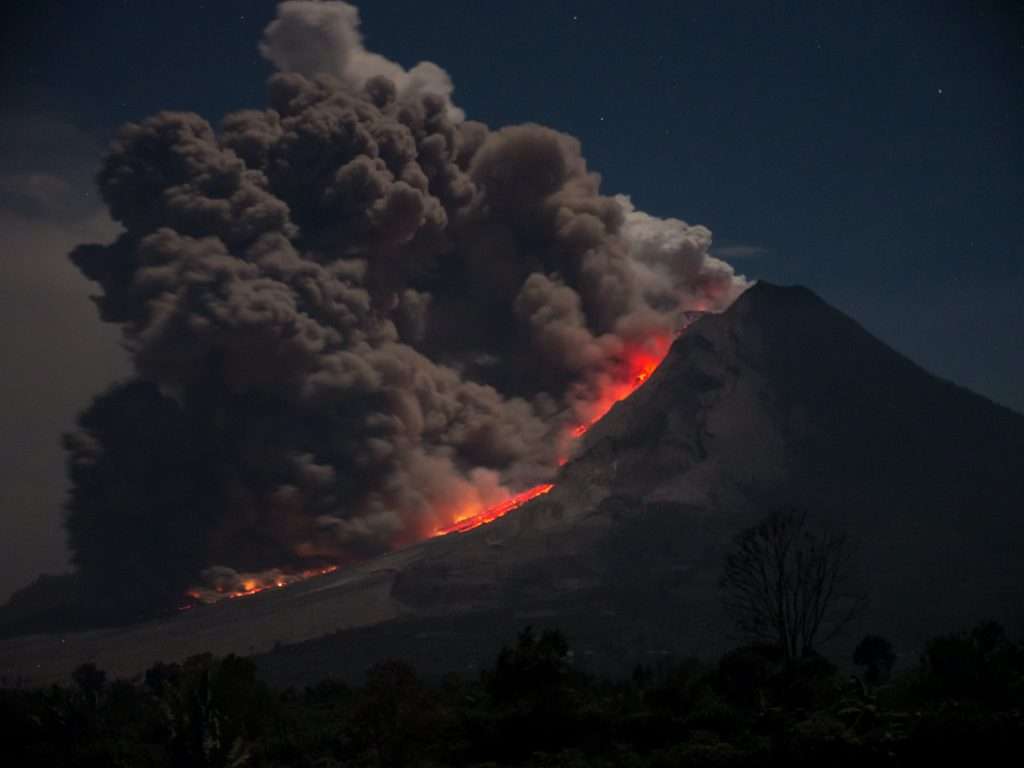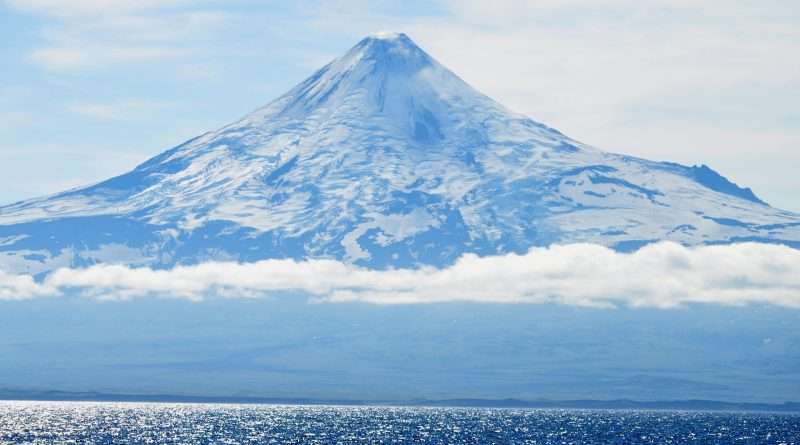Which Country Has the Most Volcanoes?
By the standard scientists use most—Holocene totals—the United States has the most volcanoes: 165. For recent historical activity, Indonesia leads (71 volcanoes with eruptions since 1800 CE; 55 since 1960 CE). At any moment, typically 40–50 volcanoes are in “continuing eruption” worldwide. Data current to 19 Sep 2025.
The Winner (Short Version) — and Why “Most” Needs a Definition

Holocene total = best all-around answer. The Smithsonian’s Global Volcanism Program (GVP) tracks volcanoes that erupted during the Holocene Epoch (~the last 10,000–12,000 years). On this count the United States ranks #1 with 165, followed by Japan (118), Russia (107), Indonesia (101), and Chile (90). This is the clearest way to say “which country has the most volcanoes.”
Historically active ≠ Holocene. If you only count volcanoes with written eruptions, national rankings shift: the U.S. Geological Survey notes the United States is third, behind Indonesia and Japan. Why? Those countries have long, dense written records and many populated volcanoes. Different time windows and criteria explain headline disagreements.
What Do “Holocene,” “Historically Active,” and “Currently Erupting” Mean?
Holocene volcano: a volcano that erupted at least once in the Holocene (~last 12,000 years). Historically active: has written records of eruptions (window varies by region). Currently erupting / continuing eruption: GVP’s roster of eruptions without a break of ≥3 months; typically 40–50 are on the list at any time.
Leaderboard: Countries with the Most Volcanoes (Holocene Totals)
This table shows the top 15 countries by Holocene volcano count, plus how many have erupted since 1800 CE and since 1960 CE. It reflects the GVP dataset current to 19 Sep 2025. Use it when you need a definitive, apples-to-apples answer.
| Rank | Country | Holocene Volcanoes | Active since 1800 CE | Active since 1960 CE | Example Currently Erupting |
|---|---|---|---|---|---|
| 1 | United States | 165 | 63 | 39 | Kīlauea; Great Sitkin |
| 2 | Japan | 118 | 62 | 40 | Kirishimayama; Aira; Suwanosejima |
| 3 | Russia | 107 | 49 | 27 | Krasheninnikov; Karymsky; Bezymianny; Sheveluch |
| 4 | Indonesia | 101 | 71 | 55 | Raung; Lewotolok; Lewotobi; Marapi; Merapi; Semeru; Ibu; Dukono |
| 5 | Chile | 90 | 35 | 19 | — |
| 6 | Ethiopia | 50 | 9 | 5 | Erta Ale |
| 7 | Papua New Guinea | 39 | 20 | 13 | Ulawun; Manam; Langila; Bagana |
| 8 | Ecuador | 36 | 18 | 12 | Sangay; Reventador |
| 9 | Mexico | 35 | 9 | 5 | Popocatépetl |
| 10 | Iceland | 35 | 14 | 10 | — |
| 11 | Argentina | 32 | 6 | 3 | — |
| 12 | Canada | 24 | 1 | 0 | — |
| 13 | New Zealand | 23 | 9 | 8 | — |
| 14 | Philippines | 23 | 14 | 6 | Kanlaon; Taal |
| 15 | Tonga | 21 | 15 | 9 | Tofua |
Source: Smithsonian Global Volcanism Program (GVP) — Country counts, data current to 19 Sep 2025.
Key Takeaways
- United States leads on total Holocene volcanoes thanks to Alaska, the Aleutian arc, Hawaii, and the Cascades.
- Indonesia is the most active in recent centuries, which is why you see it in the news so often.
- Japan and Russia are perennial top-five due to dense volcanic arcs along subduction zones.
Countries with the Most Active Volcanoes (Two Windows)
Readers often mean “most active” rather than “most in total.” The same GVP dataset shows who leads by the number of volcanoes with eruptions in specific historical windows. Below are the top 10 by activity since 1800 CE (a classic “written history” yardstick) and the top 10 since 1960 CE (a modern-instrumentation era).
| Rank | Country | Volcanoes with Eruptions Since 1800 |
|---|---|---|
| 1 | Indonesia | 71 |
| 2 | United States | 63 |
| 3 | Japan | 62 |
| 4 | Russia | 49 |
| 5 | Chile | 35 |
| 6 | Papua New Guinea | 20 |
| 7 | Ecuador | 18 |
| 8 | Tonga | 15 |
| 9 | Philippines | 14 |
| 10 | Iceland | 14 |
| Rank | Country | Volcanoes with Eruptions Since 1960 |
|---|---|---|
| 1 | Indonesia | 55 |
| 2 | Japan | 40 |
| 3 | United States | 39 |
| 4 | Russia | 27 |
| 5 | Chile | 19 |
| 6 | Papua New Guinea | 13 |
| 7 | Ecuador | 12 |
| 8 | Tonga | 9 |
| 9 | France | 8 |
| 10 | New Zealand | 8 |
Counts from the same GVP country table; ties shown in order of appearance.
Methodology Notes You Should Know
GVP includes volcanoes within national boundaries, shared areas, remote territories, and sometimes within a country’s Exclusive Economic Zone. That means totals reflect real-world geographic complexity (for example, U.S. totals include Alaska, Hawaii, and the Aleutians). Always check the “as of” date alongside any leaderboard.
Snapshot Right Now: Who Has Multiple Continuing Eruptions Today?
GVP’s “continuing eruptions” roster is the accepted source for what’s erupting today. As of 19 Sep 2025, there were 44 volcanoes in continuing eruption worldwide (note: “continuing” means no ≥3-month break). Nations with multiple entries on that list include Indonesia (Raung, Lewotolok, Lewotobi, Marapi, Merapi, Semeru, Ibu, Dukono), Japan (Kirishimayama, Aira, Suwanosejima), Russia (Krasheninnikov, Karymsky, Bezymianny, Sheveluch), Papua New Guinea (Ulawun, Manam, Langila, Bagana), Ecuador (Sangay, Reventador), Guatemala (Fuego, Santa María), the Philippines (Kanlaon, Taal), Tonga (Tofua), Mexico (Popocatépetl), the United States (Kīlauea; Great Sitkin), and Iceland. For live status, always consult the GVP page.
Why These Nations Dominate
The answer is tectonics. Most leaders sit along the Pacific “Ring of Fire,” a horseshoe-shaped belt about 25,000 miles (≈40,000 kilometers) long, where subduction zones generate long chains of volcanoes. That’s why arcs like the Aleutians (U.S.), the Kuril-Kamchatka chain (Russia), the Japanese arcs, the Indonesian arcs, and the Andes (Chile) dominate the charts.
Not all volcanoes are equal for risk. A nation can have many cones in remote areas (e.g., Alaska), while fewer but highly active volcanoes near cities (e.g., Japan, Indonesia) can pose higher day-to-day risk. Roughly 1,350–1,500 volcanoes on land are considered potentially active; typically 40–50 are erupting in any given week.
FAQ
So which country definitively has the most volcanoes?
By the Holocene standard used by scientists, the United States (165) has the most. That’s the best all-around answer.
Which country has the most active volcanoes?
For “active in recent centuries,” Indonesia leads with 71 since 1800 CE and 55 since 1960 CE. It also frequently has several volcanoes on the “continuing eruptions” list at once.
How many volcanoes are erupting right now?
The count fluctuates. As of 19 Sep 2025, GVP recorded 44 continuing eruptions. On any given day, ~20 may be actively emitting.
Why do different lists show different numbers for the same country?
Criteria vary (Holocene vs. history), inclusion of overseas territories, and where boundaries or EEZs place certain vents. GVP documents the rules behind each count.
Where can I check today’s eruptions?
The Smithsonian GVP “Current Eruptions” page aggregates authoritative updates from observatories worldwide and is the reference used here.
What Did We Learn Today?
Headlines disagree because “most volcanoes” has multiple valid meanings. If you want one clean answer, use Holocene totals; if you want who erupts most often in recent centuries, use historical windows; if you want today’s situation, check the continuing-eruptions snapshot. Here are the key points to remember:
- United States tops the global list with 165 Holocene volcanoes.
- Indonesia leads by recent activity (71 since 1800; 55 since 1960).
- Typically 40–50 volcanoes are in continuing eruption worldwide at any time.
- Most leaders sit along the Ring of Fire (~25,000 miles / 40,000 km).
- Numbers differ with methods (territories, boundary rules, data windows)—always cite the source and date.

